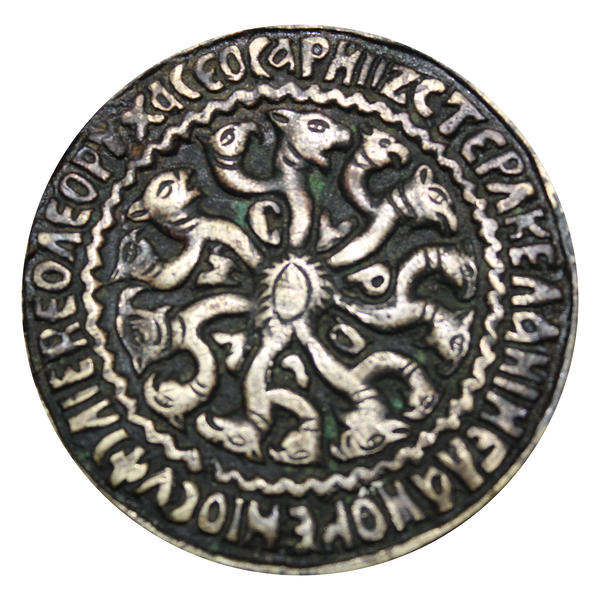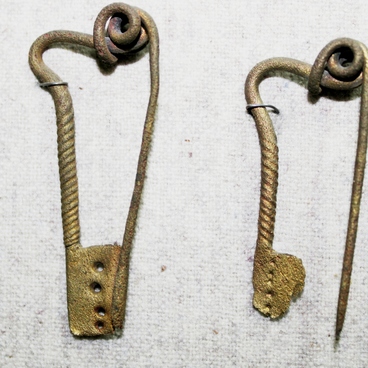Amulets worn in Russia starting from the 9th century were called serpent amulets. They combined Christian and pagan symbols: on one side of such averter an Orthodox saint was usually portrayed, while as the other side depicted a mythological creature resembling the Gorgon. Serpent amulets existed in Russia for many ages: archeologists found some produced in the 18th and in the 19th centuries.
Serpent Amulet
Время создания
12th-13th centuries
Размер
5.4 cm in diameter
Техника
Bronze, casting, embossment
Коллекция
Выставка
3
Открыть в приложении#1
Serpent Amulet
#2
#4
Serpent amulets could be of round, oval or octagonal shape. Most often they were made of bronze, but some are of silver or gold decorated with enamel or gemstones. Those were usually commissioned by the nobility.
The serpent amulet from Bryansk Museum of Local Lore was found in the town of Karachev in the site of ancient settlement Tatarskiy Val. A timber Kremlin and earthwork stood here in the 12th century protecting both Moscow and Kyiv principalities from Tatar raids.
#5
This amulet became part of the collection of Bryansk Museum of Local Lore in 1988. A group of archeologists headed by historian Gennady Polyakov was excavating Tatarskiy Val. In addition to this averter they found glassware and clayware, spearheads and arrow heads, fragments of horse harness in this ancient site. They delivered all these items to the local museum.
#6
The serpent amulet is made of a round bronze plate and decorated by embossed images. On its one side a female face is portrayed его surrounded by seven double-headed serpents. On the other side the unknown craftsman depicted Michael the Archangel — winged, wearing a long chiton and a chain coat and carrying a spear.
Michael the Archangel
#8
Michael the Archangel is believed to be the captain of the hosts of the Lord and the patron of Karachev fortress. The church was erected in honor of him in the centre of the local Kremlin. Gennadiy Polyakov assumed that such amulet could be in possession of a warrior, who received the name of Michael (Mikhail in Russian) after being baptized.
#7
On the upper edge of both sides of the serpent amulet Greek invocations are embossed. The ancient people believed that such invocations protected the owner of the averter from fiends, fever and other illnesses. The Greek inscription and the Gorgon image could also be a sign of such amulets being imported to Russia from Byzantine.
Inside the images on the serpent amulet, short inscriptions are embossed: on both sides of the Archangel figure — the abbreviation of the name Michael, on the other side between the heads of serpents — the Greek word ‘Euphrosyne’ meaning ‘joyful’.
#9
State Budgetary Cultural Institution Bryansk State Regional Ethnography Museum
читать дальшескрыть
00:00
00:00
1x
Serpent Amulet
Время создания
12th-13th centuries
Размер
5.4 cm in diameter
Техника
Bronze, casting, embossment
Коллекция
Выставка
3
Открыть в приложении
Поделиться


